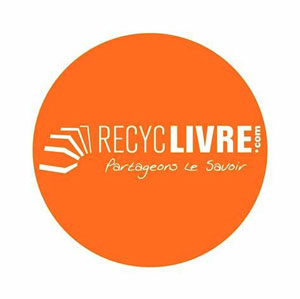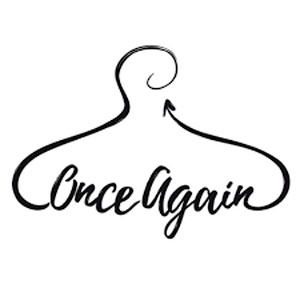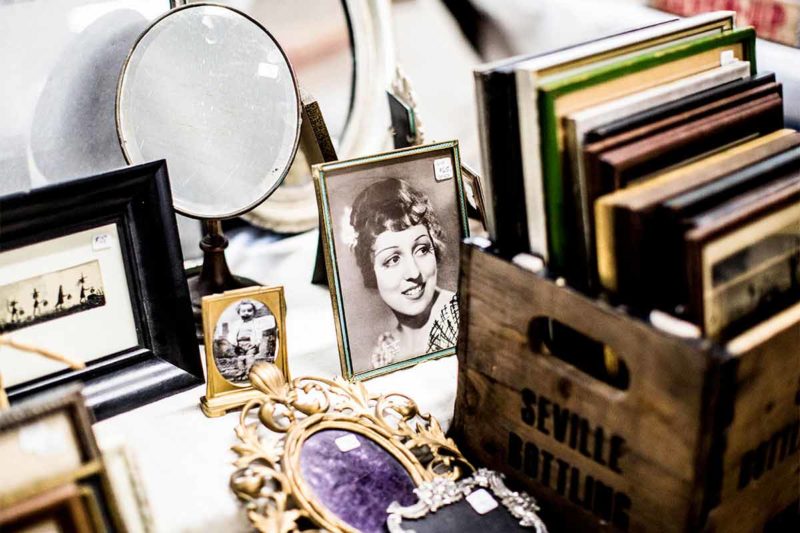We’re aware of it by now: ecology essentially rests on our behaviour as consumers. Our spending finances products that are either virtuous or polluting. Conversely, buying second hand allows you to save energy and resources and reduce CO2 emissions (which accelerate and exacerbate global warming). Let alone the unbeatable prices of second-hand items!
Ecology : why buy second hand?
The production of an item or garment requires not only raw materials which require energy to be used, but also a whole gamut of services, actions and resources (water, electricity, etc.). The whole process [from design to manufacturing to freight transport through to use] is called the life cycle. It proves systematically polluting, emits greenhouse gases and exploits precious natural resources. When you buy an item second hand, you bypass all of these pitfalls, this energy expenditure and damage. By way of a simple example, it takes the extraction of some 2.5 tonnes of raw materials to produce a single television set. This manufacturing process emits around 350 kg de CO₂. This is more than the amount generated by a return flight between London and Glasgow!
Buying second hand: the eco-friendly move to put the brakes on fast fashion
The fashion Industry is the second most polluting industry after the oil industry. Thousands of ecosystems, on land and in rivers, are destroyed by toxic dyeing plant discharges, not least in poor countries (where production sites and legislation are less than vigilant). In terms of resources, it’s also horrendous. Picture this: there is talk of 10,000 litres of water used to make a single pair of jeans! The denim-fading technique of sanding (high-pressure sandblasting) is polluting and degrades water. It also causes silicosis, an incurable, fatal illness affecting workers who breathe in silica powder. Even though this much-decried technique is supposed to be coming to an end, it is still done on a large scale. Lastly, the cultivation of the cotton needed for denim production is one of the world’s most polluting farming operations.
Unfortunately, according to the WHO, cotton accounts for 40% of the world’s textile production, 25% of the insecticides used and 2.5% of farmland. Worse still, more than half of the cotton cultivated worldwide is genetically modified. Organic cotton cultivation is more ethically sound and less harmful, since it is done without pesticides, insecticides or chemical fertilisers. But it still uses a lot of water. And fast fashion drives us to buy more and more of these cheap cotton garments made on the other side of the world. Buying second hand puts the brakes on this ecological disaster.
Buying second hand: an anti-waste weapon!
Another weighty ecological argument in favour of buying second hand: using an item a second time rather than throwing it away bypasses the generation of waste which underpins the use of packaging, plastic, etc.. The production of these waste items also requires a lot of materials and energy. In fact, packaging items should be considered items in their own right. Buying second-hand toys, for example, allows you to take the zero-waste approach, and also zero plastic, or in any case zero “new” plastic. In our society of overconsumption, the second-hand market offers another advantage: you’ll sometimes find new items still in their packaging for sale, or those in perfect condition. These items offered at low prices have a carbon footprint that’s reduced to almost nothing. It’s limited to the purchase and transport, which is generally local or national and very much pooled.
Buying second hand on the Internet: specialist or broad-based second-hand sites?






On the Internet, you have several options.
– Here in France there are specialist sites like VideDressing.com and Onceagain.fr for upscale clothes, Percentil for flea market fare and iletaitplusieursfois.com, micolet.fr and salopettepetitcol.com for nice second-hand children’s clothes.
– Others specialise in high-tech electronics: Backmarket, yesyes and the Fnac “Reconditioned and used” tab for computers and phones. Most of the major groups are getting on board, like electronics chain Darty which also offers second-hand items. These sites bring a certain number of guarantees with them: working order, brand or condition when it comes to garments, and dispatch. They are worth favouring for a major purchase, like a luxury item which could otherwise be a fake, or electronics which can break down.
– Broad-based sites like leboncoin, eBay and Vinted hinge entirely on private individuals managing classified ads and dispatch. When it comes to small items like toys, books and clothes, you can find little gems at low prices and often new, packaged or not. Book prices can sometimes be lower on second-hand book sites like momox-shop.fr, recyclivre.com and www.chasse-aux-livres.fr. So shop around before you buy!
However, you can also get a bargain on an item that’s a “bigger deal” (a bigger outlay). Typically, on leboncoin, the offering in terms of big-brand furniture in perfect condition (and even antiques), crockery, valuable home decoration items, etc. means that you can get all the furniture you need second hand. If you come to regret making your purchase or feel like redecorating a while later, you can easily sell the item on, and sometimes for the same price (if you have taken proper care of your purchases). Ultimately, then, you get all furniture you need for almost nothing.
Advice for buying on Vinted
In the space of a few years, this app has won out as the indisputable leader of the second-hand market between private individuals. It offers a second-hand shop right on your smartphone, and warrants a few pieces of advice:
1) Running searches: enter the right keywords and save what you find in your favourites.
2) Look at all the photos and read the descriptions
3) If you are not sure about something, put your question to the seller in a message. Their answer will help you make your mind up.
4) Check the seller’s profile. If they have not logged in to the app for six months (as shown on their profile), there is little chance of them replying to your message or sending you the item. Check reviews of the seller to judge how dependable they might be.
5) Go right ahead and make an offer (there’s a specific site utility to do so) or offer to buy a bundle by checking the other items in the seller’s inventory (the “put together bundle” utility). This will make the dispatch costs more advantageous.
Avoid buying on the basis of an ad with only one photo, at a price that’s ridiculously low for the quality you would expect, or reviews showing that the sale did not go ahead. That means that the item was never dispatched. Even if in that case you get your money back, it’s a disappointment.
Advice for selling on Vinted
It is also very easy to sell unwanted items on Vinted. You get the proceeds of your sales paid into your account… To make more purchases on Vinted (or you can have the proceeds credited to your bank account). You can really switch to the “closed circuit” way of financing your new purchases with the proceeds of your sales.
1) Take and select your photos with care: they must be sharp and show the item from different angles.
2) Add keywords to the description to make your ad stand out
3) Mention any flaws so that the buyer knows about them upfront
4) Pack the item with care, and add a courtesy note for the buyer
Whether you’re buying or selling, don’t forget to leave a review on the site!
Buying second hand from thrift shops, consignment sales or auctions
For those after items with a history to them, these are the outlets worth favouring. Log in to online thrift shops, auction sites like Drouot, etc. The same applies when it comes to modern-day designer furniture, jewellery, luxury leather accessories, etc. These dependable outlets generally offer associated services like delivery, as well as receipts, certificates of authenticity, etc. These places offer a good standard of traceability, and you can get real bargains. So what’s the hitch? Finding what you want. You find the best things when you’re not looking for anything in particular! Or else you have to be patient, and follow the online sales regularly, to hit on what you’ve been looking for at long last.
Buying second hand and with solidarity in mind in “resourceries” or “recycleries”

Have you heard of resourceries? They are a new kind of shop with solidarity in mind which are popping up all over, often in the form of an association. They take in private donations and sell all kinds of everyday items at low prices: crockery, toys, books, musical instruments, small household appliances… Sometimes furniture too, like at Emmaüs. You just need to look for addresses local to you to donate or buy. There you can find workshops to learn how to mend broken appliances and a network of people with solidarity in mind. The profits get ploughed into the association, which allows it to hire shop staff or take initiatives in favour of underprivileged populations. It’s the ultimate symbol of the circular economy!
What’s the right way to buy second-hand clothes?
If you’re buying for yourself, you have to picture yourself wearing the garment (which is more difficult for a jacket than a T-shirt). Look carefully at the cut, whether it has an elasticated waist, whether the fabric hangs nicely, etc. The brand can also give you an idea of the quality, especially if you’re familiar with it. In any case, look at the condition of the item. Bobbles, fabric that’s gone slack or a cut distorted by wear can be disappointing. It’s best to look for something specific. The better you know what you want, the higher your chances of finding it, especially if for example you’re looking to replace your favourite worn-out trainers. This applies even more to children’s clothes. Once you’re familiar with a brand’s designs, you can easily find them in the next size up. Generally speaking, it’s easy to buy second-hand children’s clothes because they are sold at very low prices. And since children don’t wear their clothes for long, you are not taking much of a risk in purchasing. This is something that can really cut down your spending.
What’s the right way to buy second-hand furniture?
Well, it’s a bit different. Aside from flaws like scratches, knocks, cracked paint and worn-off varnish influencing the purchase decision, the assembly and delivery terms can make all the difference. A flat-pack piece of furniture without instructions, or missing some screws, will leave you high and dry as well as annoyed. Also, since private individuals don’t deliver, it’s better to gravitate towards geolocated sales like those on leboncoin to avoid having to pay for a transport service. Lastly, beware of designer furniture items. They may have been repainted or modified, or could be reproductions, without your being able to check. Whereas if modified, their value is not the same at all! Otherwise, a great many sites (like selency, troc.com and izidore) specialise in selling vintage second-hand furniture. This means that you don’t have to buy new furniture, which is often of mediocre quality.
What’s the right way to buy second-hand luxury items?

First and foremost, the problem here is of course fake branded goods. This applies whether you’re buying handbags, perfume or jewellery, unless you use a site that provides a guarantee of authenticity. You’re taking a significant risk. Fakes now look so much like the originals that it’s sometimes very difficult to pick them up based on a photo. In particular, be wary of seller profiles with only one or two items up for sale, with only one or two reviews. They belong to those who sell a fake item and then vanish.
On sites that provide a guarantee of authenticity (the best option), ask whether the item is sold along with the original packaging, certificate of authenticity, warranty card, etc. For watches, for example, a receipt may be requested for repairs to be carried out. Selling without is not prohibited, but there may be hassle down the line.
What’s the right way to buy second-hand household appliances and high-tech items?
If you buy on the spot, in a resourcery/recyclery, it’s easy to ask for access to a power socket to check whether the item works. And by handling and seeing it, you run little risk of coming to regret your purchase. Remotely, it’s more difficult. Again, by using an official site managed by a group you can get an extended warranty. This is very reassuring, because it means that the device has been tested and “reconditioned” by professionals. You still need to arrange delivery, which can mean extra costs. However, if you’re buying from a private individual, make the trip to collect the item. If there’s a visible problem with the device, you can leave it there. Whereas if the seller delivers it to you and you then refuse to go through with the purchase, they might give you a hard time.
What’s the right way to buy used cars and non-new-build homes?
As far as cars go, the ecological concerns are similar to those that arise with high-tech items: they are made up of thousands of components which are all used items. But governments are putting incentives in place so that carmakers reduce their carbon footprint and produce more eco-friendly models. Buying a used car bypasses all the pollution related to production, but a used car can prove more polluting to drive than a new car, especially if the vehicle really is old. In some cases, used vehicles can be nearly new, with few kilometres on the clock. Again, this is where, ecologically speaking and across its whole life cycle, a used car is still preferable in the vast majority of cases. This applies whether petrol, diesel, hybrid or electric. Let alone that buying a used car makes much more financial sense than buying a new car (which depreciates hugely from the first year onwards, losing between 15 and 30% of its value).
As far as homes are concerned, be aware that urbanisation of the natural environment is a real cataclysm for ecosystems, which simply get flattened. Even though it seems like an odd thing to mention alongside clothes, be aware that the impact of these housing construction sites is every bit as worrying. Because construction materials are extremely polluting, too. Concrete is one of the most harmful materials there is. It uses up extremely large amounts of water, is in large part responsible for greenhouse gas emissions and therefore contributes to global warming. Not to mention the havoc caused by lime quarries and cement plants. The construction industry is highly destructive for the planet. Let alone the fact that investing in non-new-build property makes much more financial sense than buying a new build.
What’s the right way to buy second-hand at a car boot sale or flea market?

This is most definitely the best journey/risk/price ratio. You can see the item on site, handle the item or garment, the prices are generally very low, and lastly you bypass delivery costs. These advantages apply not least to toys and children’s clothes, which can sometimes change hands between sellers if you take part in the car boot sale yourself!
So yes, the world is changing. It’s time to stop with the overconsumption, buy less but better, sustainably and most importantly second hand to rein in our impact. It’s one of the few moves, alongside boycotting products, that has a direct, measurable, immediate effect. When you see mountains of discarded clothes washed up on beaches or hidden in the Chilian desert after leaving so much pollution in their wake, and computers piled high in an open rubbish dump in Ghana after having cost the planet so dearly in terms of rare materials, buying second hand is a forward-thinking solution. For sure!







